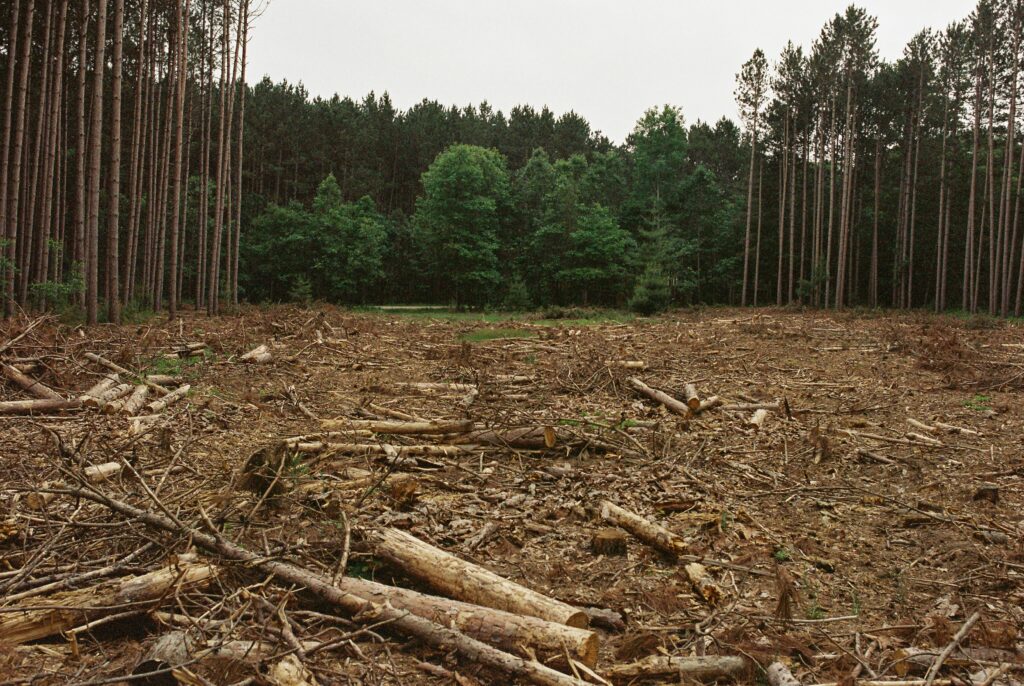The EU Deforestation Regulation (EUDR) is no longer just a policy document sitting on someone’s desk in Brussels. If you deal with commodities like coffee, cocoa, palm oil, soy, rubber, cattle, or timber and want access to the EU market, EUDR reporting is now a real part of your supply chain process.
There’s a lot of noise out there about what this regulation means and what companies are supposed to do. Some think it’s all been watered down. Others are scrambling to digitize their compliance workflows overnight. So let’s break it down properly, without fluff or legal jargon.
This article will walk through the EUDR reporting requirements as they stand today, including the latest changes, the practical hurdles, and how companies are adapting with automation.
The Basics – What EUDR Reporting Is Really About
The core idea behind EUDR is simple: products entering the EU must be proven to be deforestation-free. That proof comes in the form of documentation, geolocation data, and Due Diligence Statements (DDS). But it’s not just a one-time submission. It’s a process that needs to be repeatable, verifiable, and audit-ready.
What you need to report
Under EUDR, companies must submit:
- A Due Diligence Statement (DDS) before placing goods on the EU market
- Geolocation coordinates for where the commodities were sourced
- Details of risk assessments and mitigation steps taken, if needed
- A digital trail showing that the company did its homework
And this doesn’t apply only to producers. Traders, importers, processors – anyone placing in-scope products on the market must comply.
Recent Updates That Changed the Game
In April 2025, the European Commission introduced several changes to the EUDR framework. These were driven partly by pressure from companies and trade groups, and partly by logistical realities. Not everyone was ready.
The biggest changes include:
- Annual DDS submission instead of filing for each shipment
- Re-use of DDS for reimported goods already cleared in the EU
- Exemptions for certain product types, including waste and second-hand goods
- Simplified rules for packaging: product packaging is in scope, but shipping packaging is not
Why this happened
Many businesses, especially small suppliers, simply didn’t have the systems in place to collect and submit the required data. That includes things like GPS-tagged maps or risk analysis spreadsheets. The EU’s response was to ease the rules for now, hoping that simplification would encourage more widespread compliance.
But make no mistake – the regulation is still very much in effect. It’s just trying to meet companies where they are.

Common Reporting Challenges (And Why They Trip People Up)
Even though the EU has softened parts of the EUDR framework, reporting still isn’t simple. For many companies, especially those managing international supply chains or working with dozens of small suppliers, the compliance process introduces real operational stress. It’s not just about understanding the rules – it’s about having the capacity to follow them consistently and accurately.
Let’s look at the main pain points companies are facing on the ground.
Geolocation Data Errors
One of the toughest parts of EUDR reporting is collecting and validating geolocation data. The regulation requires exact coordinates – often in polygon format – to prove that sourcing areas are free from deforestation. The problem is, many suppliers aren’t equipped to generate this kind of data. They may not have access to GIS tools, or they might submit files in the wrong format entirely. Mistakes in the coordinates or missing attributes in the file can lead to customs rejection or delayed shipments. Even suppliers that are fully compliant can get stuck if their data doesn’t meet technical standards.
Disorganized Supplier Records
Data chaos is another recurring issue. Supplier declarations, certificates, and supporting documents often arrive in different formats, through various channels – email, spreadsheets, PDFs, scanned documents, even messaging apps. When files are stored across inboxes and desktops, it’s easy to lose track of versions or overlook something important. A single outdated certificate or a typo in a declaration can hold up compliance and trigger additional scrutiny during audits.
Spreadsheet Fatigue
For teams still relying on Excel, the reporting workload can become overwhelming. Manual data entry, file uploads, deadline tracking, and formatting reports for submission all eat up time and increase the risk of human error. What might seem manageable with a handful of suppliers quickly becomes a nightmare as networks grow. Every DDS filed manually brings the chance of missing a field or entering a wrong value. It’s not just inefficient – it’s risky, especially when compliance deadlines stack up across products and markets.
Audit-Readiness Under Pressure
Once products are on the market, the responsibility doesn’t end. Authorities expect companies to maintain a clear, verifiable audit trail for every batch of goods covered by EUDR. That means storing and organizing supporting documentation in a way that makes retrieval easy and consistent. In practice, this is where many businesses stumble. Teams often scramble to locate the correct DDS version or supporting file when an inspection is requested. Incomplete trails or missing timestamps can raise red flags, even if the actual sourcing was compliant.
Who Needs to Report (And Who Doesn’t)
Not every entity in the supply chain has the same obligations under EUDR. Here’s a quick rundown:
Reporting is required if you:
- Place regulated goods on the EU market
- Export goods from the EU to another market
- Trade or process in-scope commodities before they reach the final buyer
You might be exempt if you:
- Only handle waste, recycled, or second-hand goods
- Are using certain types of transport packaging
- Are a micro or small enterprise (though deadlines still apply later)
Even if you’re exempt from some obligations, your partners upstream or downstream may not be – so data sharing is still essential.
How Automation Is Changing the Reporting Game
Companies relying on spreadsheets are starting to fall behind. That’s where purpose-built compliance platforms are stepping in. These systems don’t just store data – they validate it, monitor it, and file it on your behalf.
What automation platforms typically handle
- Centralizing supplier records in one place
- Auto-generating DDS reports based on stored data
- Verifying geolocation data using satellite imagery
- Flagging missing or outdated files before a deadline
- Creating dashboards for internal teams and external audits
- Some platforms are already in use for these exact tasks. They integrate satellite monitoring, real-time risk scoring, and smart alerts to keep teams ahead of deadlines.
What this means in practice
Instead of asking every supplier to email you a map and a PDF, you onboard them into a shared portal. The system does the checking. You just monitor exceptions. It reduces admin work, avoids fines, and builds better supplier relationships in the process.

Deadlines and Ongoing Compliance
Filing a Due Diligence Statement (DDS) once isn’t enough. EUDR compliance doesn’t end with submission – it’s an ongoing responsibility. Companies are expected to keep their records current and reflective of any changes in their supply chain. If a supplier updates their sourcing location, or if a sourcing region becomes newly classified as high risk, your records need to reflect that. Even past imports may come under review, so maintaining a complete and audit-ready trail isn’t optional.
Beyond just monitoring suppliers, businesses need to stay in tune with evolving EU guidance. Regulatory interpretations can shift, documentation standards may tighten, and country risk assessments can change. It’s not just a matter of staying compliant on paper – it’s about being prepared if anyone ever asks you to prove it.
Key Compliance Dates
The regulation sets different deadlines depending on the size of the business. Large companies are required to comply by December 30, 2025. Smaller entities, including micro and small enterprises, have a bit more breathing room, with a deadline set for June 2026. However, that extra time shouldn’t be mistaken for a reason to delay preparation. The process of collecting geolocation data, training teams, and setting up reporting systems takes time.
While reporting is now required only once per year per product or supplier batch, that doesn’t mean you’re off the hook until the next cycle. If your sourcing changes or if something shifts in your risk profile, updated submissions may be necessary. Think of the annual filing as a minimum, not a limit.
Tips to Make EUDR Reporting Less Painful
You don’t need to overhaul your entire operation to get started. But you do need a plan. Here are a few steps that help:
- Map your supply chain: Know exactly who you’re buying from and where the materials come from
- Collect geolocation data early: Don’t wait for your shipping deadline
- Standardize documents: Templates help reduce the mess across regions
- Pick one place for recordkeeping: Whether it’s a portal or a shared drive, consistency matters
- Train your team: Everyone from procurement to compliance should understand EUDR basics
Putting these pieces in place won’t eliminate all the complexity, but it turns EUDR reporting from something reactive into something you can manage with confidence. The companies that handle this well aren’t necessarily the ones with the biggest teams – they’re the ones who stay ahead of the mess by getting organized early.

How We’re Helping Companies Navigate EUDR Compliance
Reporting under EUDR isn’t just about ticking a box once a year. It requires real evidence, clean documentation, and the ability to prove exactly where your commodities came from. That’s where most of the pressure builds up – and where we step in to make things easier.
En Cumplimiento de la EUDR, we help businesses manage the full reporting workflow, from collecting supplier data to submitting Due Diligence Statements that meet EU standards. Our platform is designed to handle the details that often cause delays – things like validating geolocation files, monitoring for risk changes, and keeping reports audit-ready all year long. We’ve taken the most time-consuming parts of EUDR reporting and built a system that handles them automatically, so your team can focus on running the business without falling behind on compliance. For companies dealing with coffee, palm oil, timber, or any other regulated commodity, we make it easier to get reporting right the first time.
Conclusión
EUDR reporting isn’t something you can approach casually. It demands real systems, clear supplier communication, and the ability to back up every claim you make with data. Even with the recent updates that ease some of the pressure, the expectation remains the same: prove your supply chain is deforestation-free.
If you’re already preparing, good. If not, now’s the time to start. The deadlines are set, and they’re not far off. Whether you handle reporting in-house or use a tool like ours to manage the moving parts, the key is staying organized, proactive, and ready for scrutiny. The sooner you treat EUDR compliance as a business process instead of a last-minute task, the fewer surprises you’ll have to deal with down the line.
Preguntas frecuentes
What is actually required in an EUDR report?
You need to submit a Due Diligence Statement that confirms your goods aren’t linked to deforestation. That means supplying detailed geolocation data for sourcing areas, a record of any risk assessments or mitigation steps you’ve taken, and a system to keep this information audit-ready.
Do I need to report every shipment separately?
Not anymore. The rules now allow companies to submit reports annually instead of for every batch. You can also reuse a previous report if you’re reimporting goods that were already cleared. But if something changes – your supplier, their location, or the risk level – you’ll need to update your filing.
What counts as being “in scope” under EUDR?
If you place goods like coffee, cocoa, palm oil, soy, rubber, timber, or cattle on the EU market, you’re likely covered. It doesn’t matter if you’re a producer, trader, importer, or just processing the goods. If they pass through your hands before reaching the EU, you probably have reporting duties.


